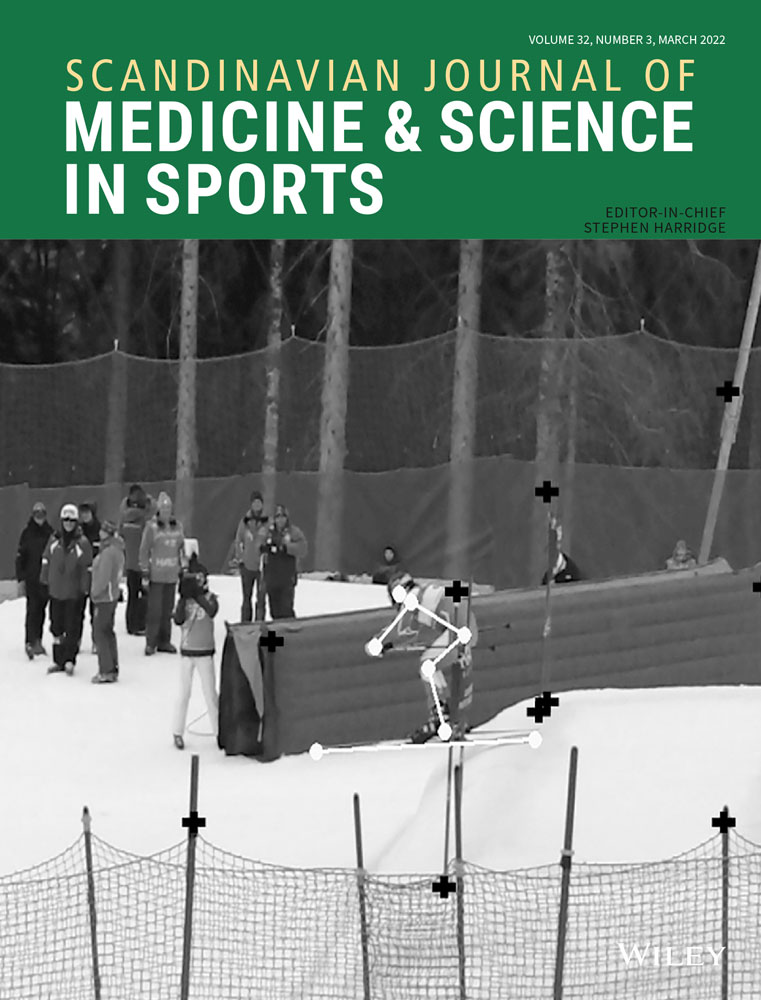Changes in blood bone markers after the first and second bouts of whole-body eccentric exercises
Abstract
The present study compared the first (EC1) and second (EC2) bouts of whole-body eccentric exercises to examine the effects of the magnitude of muscle damage on changes in blood bone markers. Fifteen sedentary young men performed nine eccentric exercises of arm, leg, and trunk muscles, and repeated them 2 weeks later. Blood samples were taken before and 2 h and 1–5 days following each bout to analyze plasma creatine kinase (CK) activity and myoglobin concentration, serum tartrate-resistant acid phosphatase (TRAP), type 1 C-terminal telopeptide (CTX-1), procollagen type I N-terminal propeptide (P1NP), bone-specific alkaline phosphatase (BAP), undercarboxylated-osteocalcin (ucOCN), carboxylated-osteocalcin (cOCN), and leptin concentrations. All except ucOCN changed significantly (p < 0.05) after both bouts. When comparing bouts for peak changes, P1NP (bone formation marker) and CTX-1 (bone resorption marker) increased less after EC2 (peak: 137±96% and 7±6%, respectively) than after EC1 (146 ± 80% and 30 ± 21%, respectively), whereas BAP (bone formation marker) increased more after EC2 (18 ± 16%) than after EC1 (4 ± 15%) (p < 0.05). Leptin (49 ± 58%) and cOCN (14 ± 10%) increased more (p < 0.05) after EC2 than after EC1 (−30 ± 15%, 9 ± 26%). Significant (p < 0.05) correlations were evident between peak CK activity and peak CTX-1 (r = 0.847), P1NP (r = 0.815), BAP (r = −0.707), ucOCN (r = 0.627), cCON (r = −0.759), and leptin (r = −0.740) changes after EC1, but many of these correlations disappeared after EC2. This was also found for the relationships between other muscle damage markers (myoglobin, muscle soreness, and muscle strength) and the bone markers. It was concluded that bone turnover was affected by eccentric exercise, but muscle damage was unfavorable for bone formation.
Open Research
DATA AVAILABILITY STATEMENT
The data that support the findings of this study are available from the corresponding author upon reasonable request. The data are not publicly available due to privacy or ethical restrictions.




